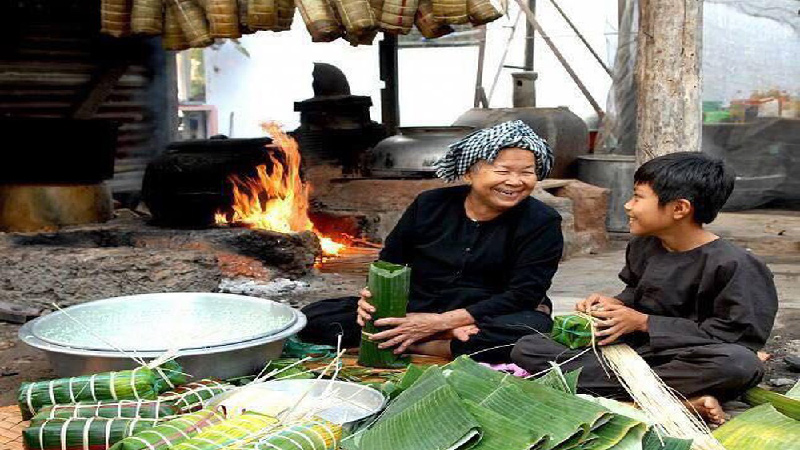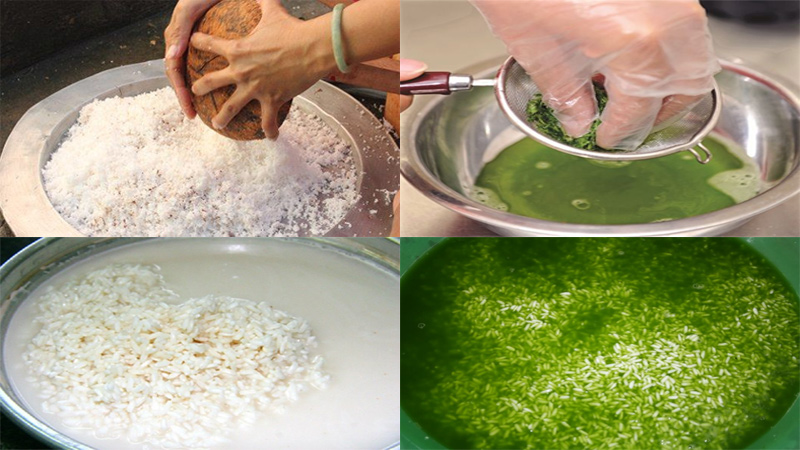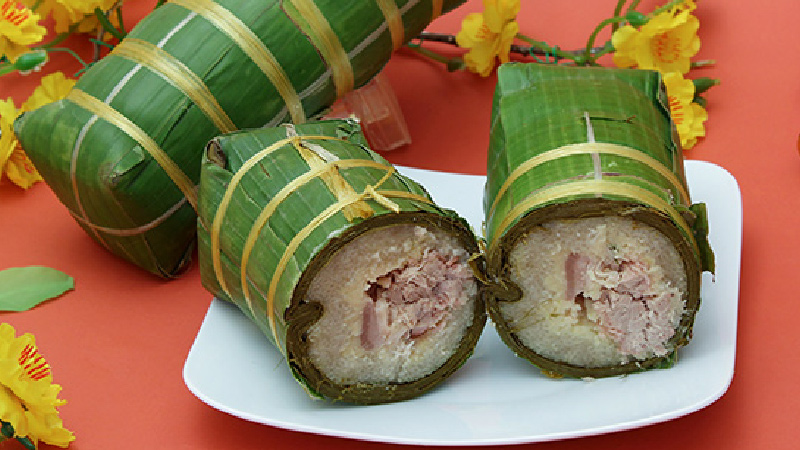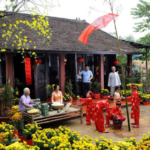Banh Tet, or Vietnamese sticky rice cake, is a traditional delicacy during the Lunar New Year celebrations in Vietnam. The story behind this delicious treat dates back to the reign of King Quang Trung, who, in 1789, led his troops to victory against the Qing Dynasty on the Tet Mau Than (Lunar New Year). During the festivities that followed, a soldier presented the king with a special cake made by his wife. Captivated by its unique flavor and touched by the soldier’s devotion, King Quang Trung declared that this cake would be enjoyed during the Vietnamese New Year and named it “Banh Tet”.
Over time, due to regional variations in pronunciation, “Banh Tet” evolved into “Banh Chung” in the Northern regions. The name also holds a symbolic meaning, as it refers to the act of cutting the cake—each slice is gently “tét” (pressed) to create a manageable portion.
1 The Significance of Banh Tet
 The Significance of Banh Tet
The Significance of Banh Tet
In Vietnamese culture, each dish served during the Lunar New Year holds a special meaning. Banh Tet is no exception, symbolizing gratitude to ancestors, wishes for prosperity and family reunion, and prayers for a bountiful harvest in the coming year.
The outer layer of banana leaves represents the protective embrace of a mother, reflecting the Vietnamese desire for family togetherness during the holiday season. The mung bean filling, with its golden hue, evokes images of ripe rice fields, while the green sticky rice symbolizes the tranquility of the countryside, inspiring hopes for a peaceful and prosperous new year.
Banh Tet is more than just a delicious treat; it embodies the love and warmth of family gatherings during the festive season. In keeping with tradition, families gather on the 29th and 30th of Tet to prepare the cakes together, staying up late into the night, chatting, and sharing stories while the cakes cook. This heartwarming custom adds to the festive atmosphere and strengthens family bonds.
2 The Secret to Delicious Banh Tet: Mastering the Art of Frying Sticky Rice
Frying the sticky rice is a crucial step in creating mouthwatering Banh Tet.
Ingredients:
- 2kg sticky rice
- 1 dried coconut
- 1 bunch of pandan leaves (or butterfly pea leaves for a natural blue color)
- 1 tablespoon of salt
Step 1 Prepare the Ingredients
 Preparing the Ingredients
Preparing the Ingredients
Grate the dried coconut to obtain the white flesh, and then squeeze out the coconut milk. Cut the pandan or butterfly pea leaves into small pieces and blend them with water to create a smooth puree. Strain the mixture to separate the leaf pulp from the colored water.
Rinse the sticky rice and soak it in the colored water for 1-2 hours to allow the rice to absorb the natural color and expand evenly. This soaking process ensures that the rice grains become plump, shiny, and tender, resulting in a softer and more delicious cake. After soaking, drain the rice and set it aside to prepare for frying.
 Frying the Sticky Rice
Frying the Sticky Rice
This step is crucial, so make sure you have a large wok or pan with a wide brim to control the heat effectively. First, pour the coconut milk into the pan and bring it to a boil. You can add a pinch of salt to the coconut milk to enhance the flavor.
Next, add the drained sticky rice to the pan and stir continuously until the rice absorbs all the coconut milk. Keep the heat at a medium level to prevent burning the rice. You’ll know it’s ready when the rice is sticky, shiny, and fragrant.
Now you know the secrets to making delicious Banh Tet! Impress your family and friends this Lunar New Year with your homemade Banh Tet, filled with love and the finest ingredients.






































